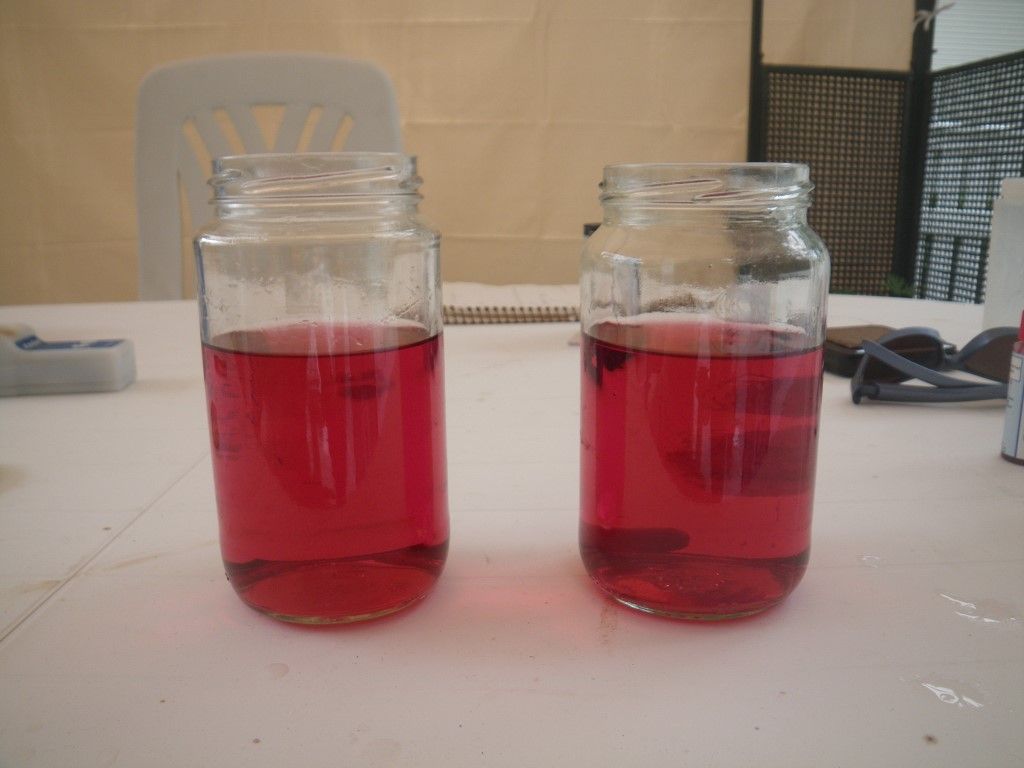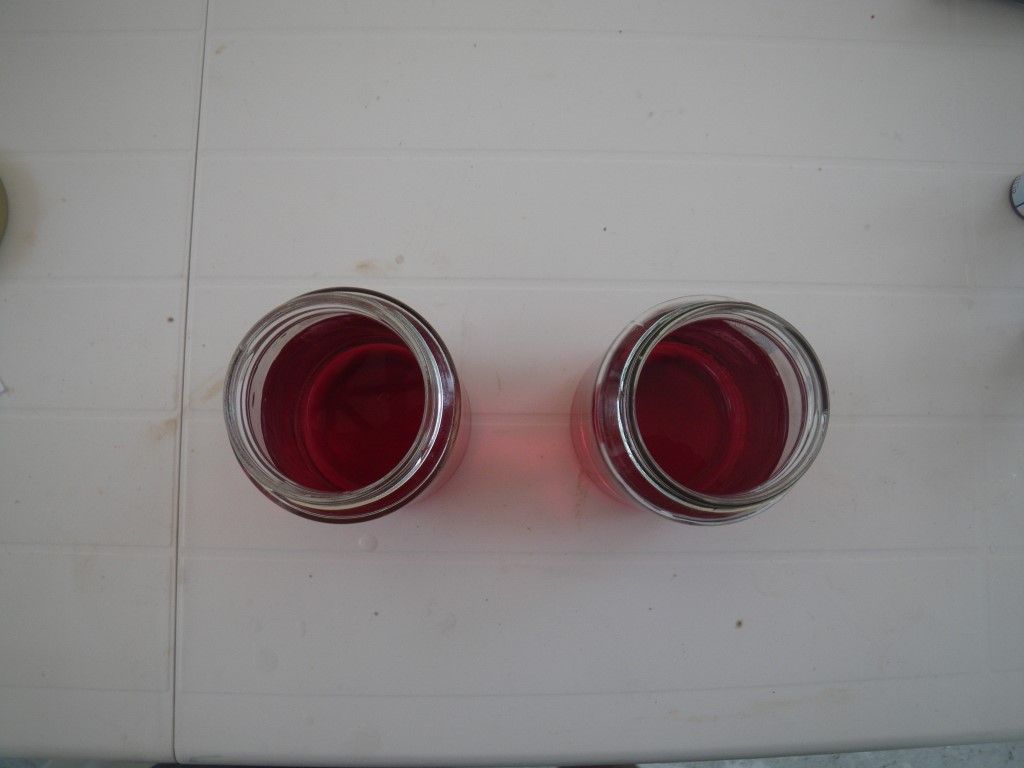There is a way to use pool water chemistry to calculate pool water volume without using the traditional geometric calculations.
The geometric formulas are fine for pools that are traditionally shaped. However, when pools do not fall into these convenient shapes, a chemical method can be used.
What is required? An alkalinity test kit, sodium bicarbonate or acid, and the formula.
This method to calculate pool volumes, then, is to add a specific amount of acid or base to the pool water, observe the results, and “plug” the dose and result into a formula, so you can calculate the gallons of water in the pool.
Here is the method:
1. Take a water sample from the pool, test and determine the total alkalinity content. However, for sufficient accuracy, it is important to use a test method which is accurate to within 1 or 2 ppm. Most test kits have each drop of titrant equal 10 ppm. To accomplish this, add 10 times the amount of pool water as the normal test kit sample amount into a small cup. Then each drop of titrant becomes 1 ppm instead of 10 ppm. If the alkalinity is on the low side and could be raised, then use sodium bicarbonate to raise the alkalinity.
2. For pools between 15,000 and 30,000 gallons, add precisely 5 pounds of sodium bicarbonate. For larger pools, add 10 pounds.
3. With the circulation system running and proper dilution, wait for the chemical to completely blend throughout the water, which will probably require waiting at least several hours.
4. Take a second water sample from the pool and test the alkalinity again using the same 10 times of pool water volume.
5. Apply the following formula: 71,400 (formula number for Sodium Bicarbonate) times (multiply) by 5 (amount of pounds of sodium bicarbonate added) divided by the ppm change in alkalinity increase equals the pool volume.
(You may add a different amount of sodium bicarbonate, but be precise in weighing, and change the formula accordingly).
Example – The starting alkalinity was 100 ppm, 5 pounds of Bicarb is added, and the ending TA (alkalinity) is 116 ppm. (116 – 100, equals 16 ppm change)
71,400 X 5 (pounds added) divided by 16 (ppm ALK increase) equals 22,312 gallons.
Then you can round off to the nearest 1000 gallons, or however you prefer. The margin of error should be less than 5%.
If the Total Alkalinity of the pool is high (over 160 ppm) and you want to lower the TA instead of raising it, then you can use muriatic acid (31.45%) to lower the alkalinity to determine the pool volume. The formula for adding acid is as follows:
125,000 (formula number for Muriatic Acid) times (X) the quarts of acid added, divided by the ppm reduction in alkalinity. Of course, be careful to not add too much acid at one time. Generally, it is safe to add two quarts of acid per 20,000 gallons of pool water when the TA is over 160 ppm, and the pH is above 7.7. Two quarts of acid will lower the TA by 12.5 ppm per 20,000 gallons.
The accuracy of this method is directly dependent on the accuracy of the chemical dose and the alkalinity test method. You will notice that using 10 times more test water sample means that if the alkalinity level is 100, it will use 100 drops of titrant. That may seem a lot, but you get good accuracy and results.
Do not go overboard on volume precision. Since a one-inch change in a pool’s water level can result in hundreds of gallons of water volume difference, round off the calculated volume to the nearest 1000 and call it good.
The method of addition of the acid dose does not affect the amount that the alkalinity changes, so it is not necessary to worry about “columns” or “slugs” or any other methods of adding liquid pool acid. However, it is best to dilute the acid and trickle it around the pool or over the return lines when the system is on.
What is at issue is that the acid or sodium bicarbonate added is allowed to fully blend throughout the pool before the second sample is taken and tested. Wait at least 3 hours with equipment running for good accuracy.
The geometric formulas are fine for pools that are traditionally shaped. However, when pools do not fall into these convenient shapes, a chemical method can be used.
What is required? An alkalinity test kit, sodium bicarbonate or acid, and the formula.
This method to calculate pool volumes, then, is to add a specific amount of acid or base to the pool water, observe the results, and “plug” the dose and result into a formula, so you can calculate the gallons of water in the pool.
Here is the method:
1. Take a water sample from the pool, test and determine the total alkalinity content. However, for sufficient accuracy, it is important to use a test method which is accurate to within 1 or 2 ppm. Most test kits have each drop of titrant equal 10 ppm. To accomplish this, add 10 times the amount of pool water as the normal test kit sample amount into a small cup. Then each drop of titrant becomes 1 ppm instead of 10 ppm. If the alkalinity is on the low side and could be raised, then use sodium bicarbonate to raise the alkalinity.
2. For pools between 15,000 and 30,000 gallons, add precisely 5 pounds of sodium bicarbonate. For larger pools, add 10 pounds.
3. With the circulation system running and proper dilution, wait for the chemical to completely blend throughout the water, which will probably require waiting at least several hours.
4. Take a second water sample from the pool and test the alkalinity again using the same 10 times of pool water volume.
5. Apply the following formula: 71,400 (formula number for Sodium Bicarbonate) times (multiply) by 5 (amount of pounds of sodium bicarbonate added) divided by the ppm change in alkalinity increase equals the pool volume.
(You may add a different amount of sodium bicarbonate, but be precise in weighing, and change the formula accordingly).
Example – The starting alkalinity was 100 ppm, 5 pounds of Bicarb is added, and the ending TA (alkalinity) is 116 ppm. (116 – 100, equals 16 ppm change)
71,400 X 5 (pounds added) divided by 16 (ppm ALK increase) equals 22,312 gallons.
Then you can round off to the nearest 1000 gallons, or however you prefer. The margin of error should be less than 5%.
If the Total Alkalinity of the pool is high (over 160 ppm) and you want to lower the TA instead of raising it, then you can use muriatic acid (31.45%) to lower the alkalinity to determine the pool volume. The formula for adding acid is as follows:
125,000 (formula number for Muriatic Acid) times (X) the quarts of acid added, divided by the ppm reduction in alkalinity. Of course, be careful to not add too much acid at one time. Generally, it is safe to add two quarts of acid per 20,000 gallons of pool water when the TA is over 160 ppm, and the pH is above 7.7. Two quarts of acid will lower the TA by 12.5 ppm per 20,000 gallons.
The accuracy of this method is directly dependent on the accuracy of the chemical dose and the alkalinity test method. You will notice that using 10 times more test water sample means that if the alkalinity level is 100, it will use 100 drops of titrant. That may seem a lot, but you get good accuracy and results.
Do not go overboard on volume precision. Since a one-inch change in a pool’s water level can result in hundreds of gallons of water volume difference, round off the calculated volume to the nearest 1000 and call it good.
The method of addition of the acid dose does not affect the amount that the alkalinity changes, so it is not necessary to worry about “columns” or “slugs” or any other methods of adding liquid pool acid. However, it is best to dilute the acid and trickle it around the pool or over the return lines when the system is on.
What is at issue is that the acid or sodium bicarbonate added is allowed to fully blend throughout the pool before the second sample is taken and tested. Wait at least 3 hours with equipment running for good accuracy.
Last edited:





